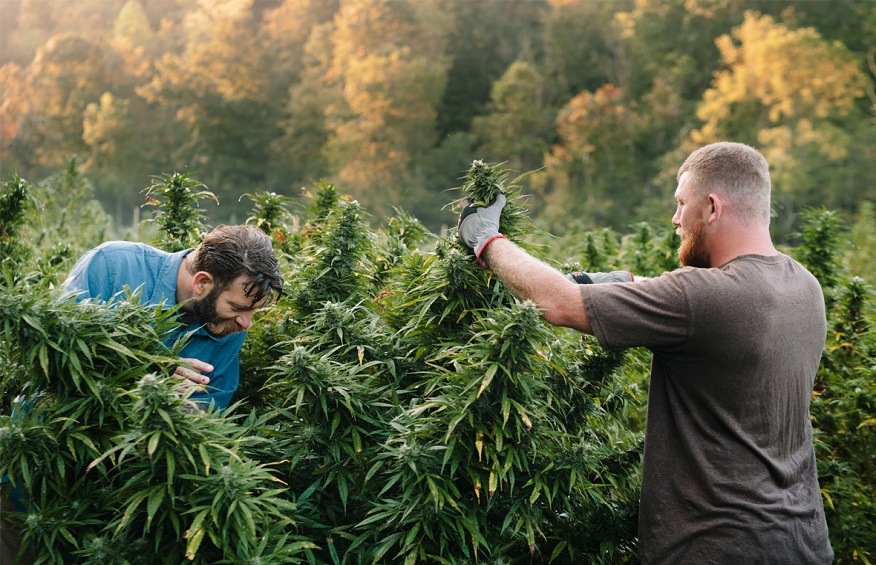CBD and Sustainable Farming Practices

Hemp is a versatile crop that is simple to grow, maintain, and harvest. It is also a rapidly growing high-value specialty crop that can be grown for fibre, seed, or cannabidiol (CBD).
Also known as industrial hemp as it is grown primarily for industrial purposes and can be utilised to create a variety of items. Paper, rope, textiles, clothes, biodegradable plastics, insulation, biofuel, food, animal feed, buy cbd oil are just some of the commercial products that may be made from it.
India’s Soil Requirements for Industrial Hemp Cultivation
Hemp can grow in a wide range of soil conditions. The hemp plant prefers sufficiently deep, well-aerated soil with a pH of 6 or above, as well as strong moisture and nutrient retention capability. Excess surface water following heavy rains can cause crop damage in poorly drained soils. Flooding and soil compaction are major threats to the hemp crop.
Soil preparation is critical in Industrial Hemp Cultivation, and all soil hardpans must be broken to allow free draining, as waterlogging kills the plants, particularly the young ones. The existence of a compacted layer might inhibit root development, especially if the compaction pan is the result of poor soil preparation. Fertile clay loam or silt loam soils with neutral pH are best for industrial hemp cultivation. It will not sprout on acid sandy soils, heavy clay soils, or gravelly soils. Hemp plants grow in peaty marshlands, but they produce less fibre and are of lesser quality. It thrives in soils with excellent water-holding capacity, and efficient soil drainage is critical to maximizing production since Hemp plants failed to thrive on poorly drained soils.
Hemp can be grown in a range of soils, although it thrives in loose, deep soils rich in organic matter, fertile loams, and pH levels ranging from 6.0 to 7.5. Wet soils are not conducive to hemp plant growth. To get the best crop yields, test your soil many months before planting and apply lime and fertilizers as needed.
Hemp soil preparation is similar to that of other spring crops, such as spring small grains. Fibre hemp is seeded on well-prepared soils in the spring. Soil preparation varies according to cropping method and rotational pattern, but is comparable to that of spring wheat. To germinate properly, hemp seeds require a firm seedbed and adequate soil contact.
What does the law say?
Hemp and marijuana both come from the same family of plants, but they are very different. Hemp is actually a type of cannabis. The formal name for it is Cannabis sativa L. “cannabis (hemp)” is described in three parts by Section 2(iii) of the Narcotics and Psychotropic Substances Act of 1985 (NDPS ACT). First, it talks about “charas,” which is any resin that comes from the cannabis plant. Section 2(iii)(b) then talks about the “flowering or fruiting tops of the cannabis plant.” Finally, the rule talks about any drink or mixture made from these two types of cannabis. The Narcotics and Psychotropic Substances Act of 1985 also allows mass cultivation of hemp for horticulture and Industrial usage. But Section 10 of the Act says that it is up to the state government to decide what the limits are for giving licences to grow it. When you look at the NDPS Act, you’ll see that it doesn’t make a difference between hemp and cannabis. Section 14 of the Act allows cannabis to be grown for industrial uses, but only for horticulture and to get fibre or seeds. But because of this, it is hard to keep track of and limit the growth of both. The amount of tetrahydrocannabinol (THC) in industrial hemp is usually less than 0.3% if one wants to buy cbd oil.
What’s now?
With a CAGR of 34%, the global industrial hemp market is projected to grow from USD 4.6 billion in 2019 to USD 26.6 billion in 2025. India hasn’t really looked into the wonders of this plant, even though it is known for its agricultural business and farming potential. The study that will grow cannabis at the Central Institute of Medicinal and Aromatic Plants has been approved by the narcotics department of the revenue branch of the Union Ministry of Finance. Even though the NDPS Act gives the state government the power to give licences for hemp farming, the lack of a systemized government route and the imposition of excise duties on opium, Indian hemp, narcotics, and other narcotic drugs (but not on medicines or toiletries that contain alcohol or any other substance), as laid out by the State Government under Entry 51 of the List II of the Seventh Schedule of the Indian Constitution, has made it hard to get a licence. Not even all of them, but Uttarakhand is the first state to take a step towards making it legal to grow hemp on their land and now cbd oil online is available.






